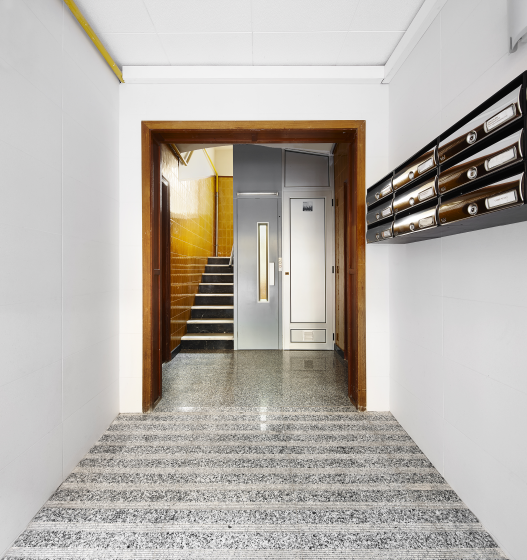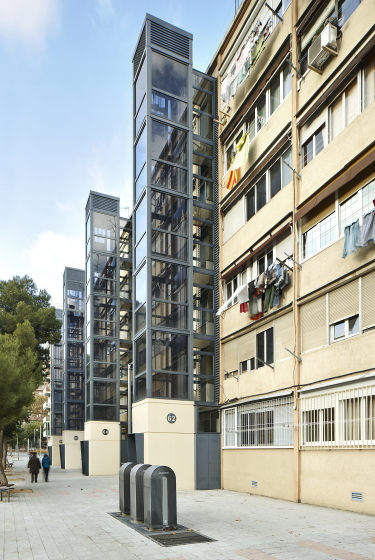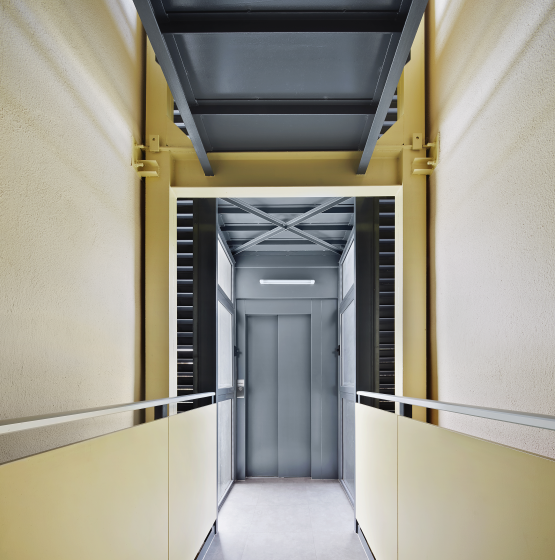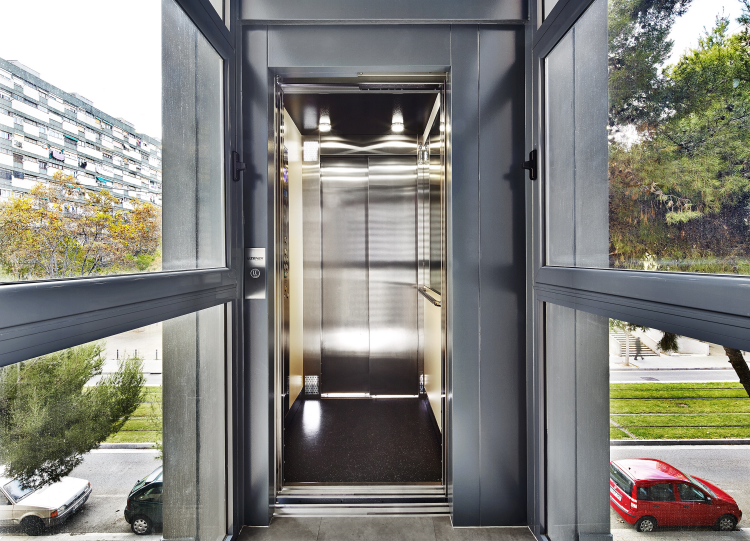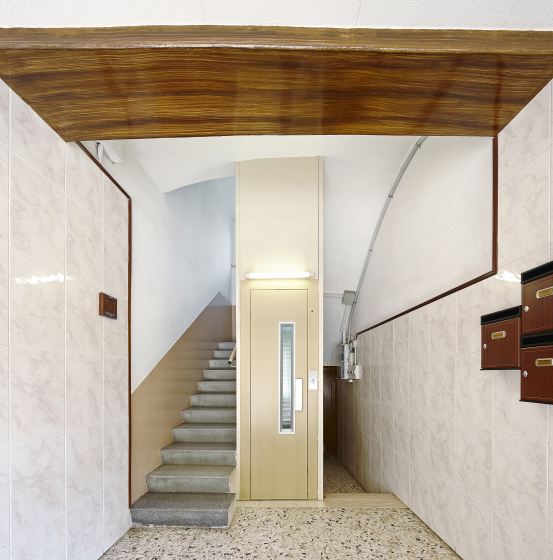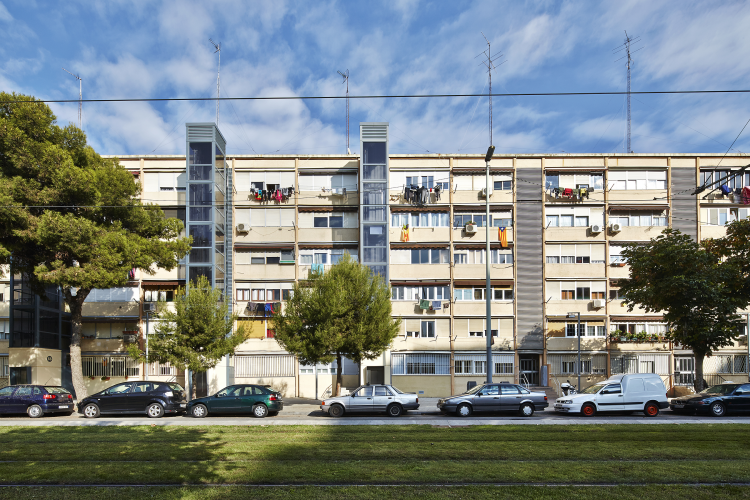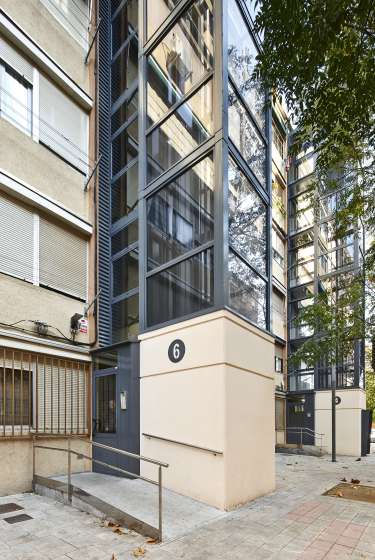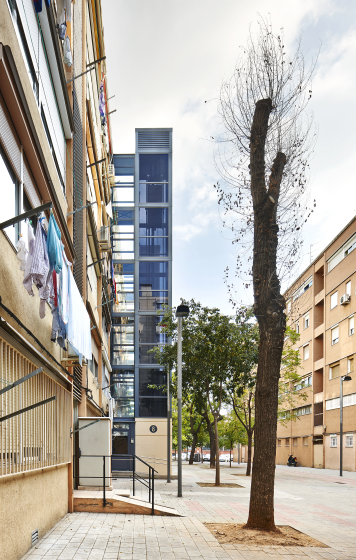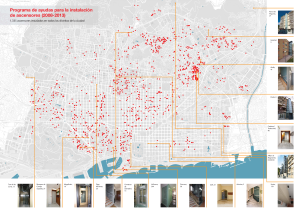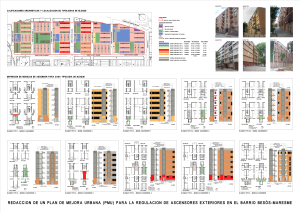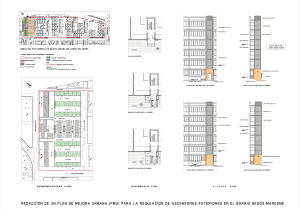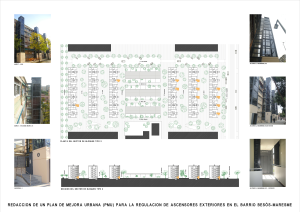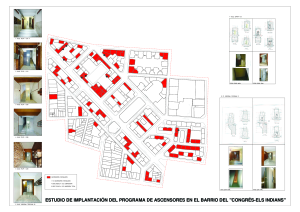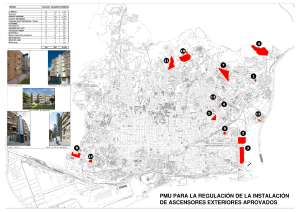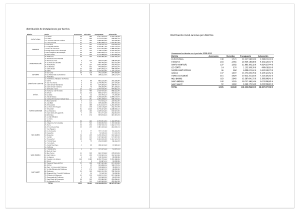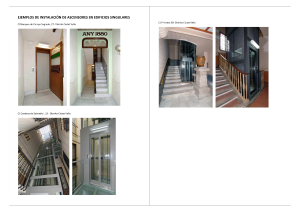EXPLANATORY NOTES TO AID PROGRAM FOR INSTALLATION OF LIFTS IN THE CITY OF BARCELONA (2008-2013) The aid program for the installation of elevators was launched in the city of Barcelona with the main objective to solve the most common residential buildings built before 1960 problem: the lack of elevator, a problem especially important for quality of life of older people (majority population of these dwellings) and the population in general. Before the launch of the program in 2008, a previous study of the potential of buildings was performed without lift, 4 storeys or more, existing in the city and susceptible to install an elevator. In total the resulting maximum ceiling was 6,985 buildings that had no elevator and it was possible to install without comprehensive reforms or major structural damages. 1,335 elevators were installed in four years The good reception of the program has allowed to install 1,335 elevators which has benefited 18,649 households. This program includes first supplementary grants of up to 100% of the cost for those owners with annual household incomes of less than € 20,000, incorporating the obligation to return the additional amount granted in case of transmission housing. This is a proactive program, led and impulado by the city of Barcelona and where they have sought partnerships with various professional associations and industry players such as the Chamber of Urban Property, the College of Property Administrators, Guild Entrepreneurs Elevators, the Architects Association, the College of Technical Architects, the College of Engineers and the Federation of Neighbours of Barcelona. Improving the quality of life, the main objective of the program Improving the accessibility, universality, social cohesion and territorial balance are the purposes of this program. The installation of an elevator not only improves the quality of life (accessibility) of users but also helps set the population living in the buildings (social cohesion), and although the entire city (universality) it is directed allows special attention the neediest neighborhoods (territorial balance) New management model based on proximity to the citizen The implementation of this aid program involves the design and implantation of a new management model based on proximity to the citizen to streamline information, processing and payment of the aid. So through the network of offices Housing resources to communities of owners are given to find technical solutions to enable the elevator installation. Responding to the challenges identified for the installation of elevators gave rise to the foundation of the program The problems that hindered the installation of elevators were basically three: Economics: the lack of resources to undertake the works by the owners. This situation was particularly serious in the case of persons aged 65 years and owners with few family income. Techniques: by ignorance of the possibility of installing an elevator in a building and other difficulties and contradictions in policy on the feasibility of installing an elevator in an existing building part, and lack of planning regulations to install lifts on the outside of the buildings in housing estates with the same problem. Legal: by the lack of agreement in the communities of owners, ignorance of existing regulations, and the need for third party mediation to achieve a consensus agreement of all owners. Economic aid, improved management, proactivity, proximity and universality as city project are the basic criteria of the program Practical solutions to the problems identified are those that have marked the basic criteria of the program and set the framework of the aid program. Economic: Establish a grant to encourage the installation of lifts. -Set Supplementary grants of up to 100% of the cost for those owners with annual household incomes of less than € 20,000, incorporating the obligation to return the additional amount granted in case of transmission housing. Establish agreements with the agents involved in the execution of the work for which the grant was paid directly to them without the owners had to advance the amount of the grant, reducing the economic burden that should withstand owners. Establish an agile management and disbursement of funds within a period not exceeding 90 days. Techniques: Establish a minimum technical and quality for obtaining the building permit requirements: -Homologación Criteria in the technical services of the 10 districts of the city by passing a circular technical criteria for granting a building permit for the installation of an elevator. This circular unified interpretation of all existing technical regulations, facilitating obtaining planning permission. Creation of an interdepartmental commission - with the participation of inspection and licensing, urban, firefighters, offices and housing-for analyzing projects that although the criteria presented contradictions with the various regulations. -Analysis Of the specific problems for the installation of lifts: Individual building: completion of a free report location of the elevator for each community of owners who wanted it. Polygon neighborhood: a study for a specific neighborhood for the installation of elevators inside buildings Writing a plan of urban improvement (PMU) to allow i regulate the installation of lifts on the outside of buildings Legal: Information and advice on existing regulations, mediation between owners, explaining how to get agreements by exposing examples in other communities. Facilitate agreement by consensus and not by imposition based on existing regulations The bases also provide for dissemination of the program and proactivity to implement the execution of advertising campaigns and conducting meetings led to a condominium, from the network of offices Barcelona Housing and agreements with the various stakeholders. Impulse in neighborhoods with special difficulties in the installation of lifts. There are neighborhoods in Barcelona where for the type of construction, the elevator installation is only possible if done on the outside and other neighborhoods where it is necessary to make a previous study because caraterísticas architectural and urban buildings. For this reason since the beginning of the program have been conducted performances as adapted to each need to address these additional difficulties. The City Council is studying the more solution adjusted to the needs of each group of buildings and depending on the architectural possibilities and conditions of use, poses for each building the most appropriate action. Of these performances will highlight the Urban Improvement Plan Besòs neighborhood, where they have installed a total of 14 lifts on the outside of the buildings and the study of program implementation lifts Congres neighborhood of Els Indians, where they have a total of 110 installed elevators. Study program implementation lifts Congres neighborhood of Els Indians This district created in 1950 had a large part of the aging population and mobility issues, in order to solve this problem and due to planning and architectural features of the buildings was necessary to conduct a preliminary study to make a diagnosis those where it was possible to install a lift. Thus, of 332 buildings, elevator had only 59. Of the remainder, 220 were viable to install a lift and 73 were subject to a report location. The study identified five types of buildings, marking a priority install the lift in the stairwell. In two of the types you could install the elevator changing the width of the staircase. The third type could install the elevator in the lobby of the stairs. The fourth was necessary to draft an Urban Improvement Plan to locate the elevator outside the building and the fifth installation is provided by the interior patio since it was the only possible location. The result was that 114 of the 220 possible lifts were installed, with financial assistance of up to 60%, with a maximum € 45,000 for installation and supports up to 100% in cases where family income was less than 2 times the minimum wage. Technical advice was given and criteria according to the existing legislation that facilitated full installation of elevators in this neighborhood were developed. The study commissioned by the city of Barcelona, with the collaboration of the Chamber of Urban Property Barcelona and the College of Estate Managers who offered legal advice. Also participating Lifts Business Guild, the Association of Architects of Catalonia, the College of Technical Architects and the Office of Housing District of Sant Andreu Urban Improvement Plan (PMU) for the regulation of external elevators in the neighborhood of Besòs-Maresme The neighborhood of Besòs was developed and built in the early 60s by the Municipal Board of l'Habitage of Barcelona. In this neighborhood, construction types of linear block ground floor and five upper floors with rows of houses with private gardens are combined. Currently the population has aged and has mobility difficulties. To regulate definitely the installation of elevators, in May 2007 an agreement accession and collaboration between the Municipal Board of l'Housing of Barcelona, Barcelona City Council and the Neighbourhood Association of barri Besòs-Maresme and assistance is signed Secretary d'Housing of the Generalitat de Catalunya to promote a program to improve the accessibility and removal of architectural barriers barri Besòs-Maresme. In November 2009 the Urban Improvement Plan (PMU) for regulating the installation of external elevators in housing blocks Besòs-Maresme neighborhood, area bounded by the streets d'Alfons the Magnanimous, Bernat Metge, in approving Perpinyà and Llull. The aim is to meet accessibility requirements. To do this you need to take fully or partially outside, so that the free space surrounding blocks of public ownership is concerned. There are three parameters governing the PMU management: In all communication blocks for the elevator and walkways and entrances The height of the ground floor if necessary extend the current farm lobby. The scope of deployment in outer space to the height ground floor, for the location of new stairs or ramps required for access to the lobby. These models, noticeable from the public space, defined in terms of form, materials, textures and colors you have to have the proceedings throughout the neighborhood and specifications for each block type. Lifts models established in this PMU are based on a free treatment "tower" of lift, which has a foundation boot, some enclosures exposed concrete floor painted, and resistant to vandalism and maintenance item. The rest of the tower on the upper floors, is formally defined by the light metal frame, painted with the same color for all performances and aluminum frames with glass filter parsol gray. From these towers go landings, which connect to the housing through metal walkways exposed structure and aluminum windows with clear glass from the outside. Subsequently, a ceiling lined with wood to be painted in tune with handrails. To install elevators condition was that the structural problems of the communities had been rehabilitated. In this sense, no lift 128 communities meet this requirement, and of these 90 communities could benefit from the agreement. In total, elevators were installed in 11 communities, representing a total of 132 homes benefited. Financial assistance of up to 66% for elevators practicable routes with a maximum € 45,000 per facility and grants were given to 100% in cases where family income was less than 2 times the minimum wage Throughout this process, the Municipal Board of l'Habitatge has taken over from previous studies, the order and wording of projects, public presentation to the residents of the proposals according to the types of blocks, economic management corresponding to each neighbor impact of public works contracts and their allotments, monitoring of work, coordination with companies for moving services affected by the implementation of the elevators, as well as the processing part Supports corresponding conjunction with the Consortium de l'Housing of Barcelona. Implementation, monitoring and evaluation The program started in September 2008 has been successful in the number of installed, most elevators, if we consider that the program provides a financial grant and facilities management, but neighboring communities that have low consensus of application and deal with the remaining costs. Beyond these results and this brings undoubted improvements in the quality of life of citizens, the program is a success in boosting the rehabilitation sector and the economic impact of the subsidy in generating investment in a moment of crisis. Subsidized Lifts 1,335 Housing benefit 18,649 Investment budget 118M € Grant Amount 48,2M € Studies drafted neighborhoods 1 which covers an area of 352 buildings PMU written 14 which allow to install lift on the outside in 862 communities, benefiting 10,258 households : : :
Modalidad urban planning
Uso
Dirección
Barcelona
Barcelona (Spain)
- Barcelona Gestió Urbanística SA
- Barcelona Gestió Urbanística SA


